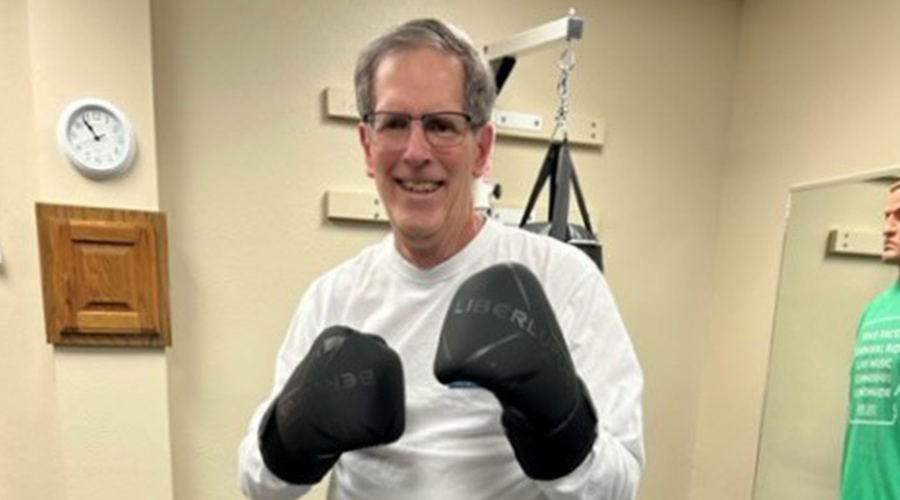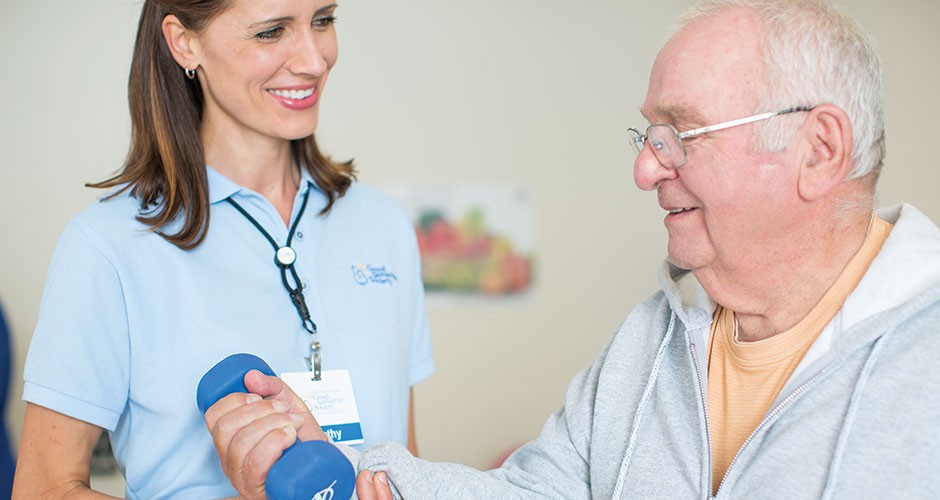Life-changing therapy for people living with Parkinson’s disease (PD) is becoming more widely known and used.
Because people who have Parkinson’s disease tend to take short steps, have reduced arm movement when walking, speak more quietly and have less facial expression, LSVT LOUD and LSVT BIG are important treatments.
“They are the gold standards for Parkinson’s speech and movement therapies,” says Toni Hobbs, therapy supervisor at Good Samaritan Society – Hot Springs Village in Arkansas.
Toni advises Parkinson’s patients to start LSVT treatment as early in their diagnosis as possible.
“The sooner you can start the better. But it’s helpful for anybody in any phase of the whole process,” she says. “They need to make sure they have practitioners who are familiar with Parkinson’s and therapists who are very knowledgeable.”
How LSVT works
LSVT options benefit Parkinson’s patients in two ways. The LSVT LOUD component trains them to use a stronger voice at a normal loudness level while LSVT BIG helps them learn to move their body more regularly.
According to Toni, LSVT LOUD originally started as LSVT, which stands for Lee Silverman Voice Treatment. Lee Silverman was the first patient of Dr. Lorraine Ramig, who was interested in finding a way to improve speech for people with Parkinson’s. As a result, the LSVT program began in 1987. It eventually became known as LSVT LOUD.
“This is a completely different approach to treating an articulation and voice disorder,” says Toni.
LSVT BIG focuses on movement. The idea behind this program is for patients to think big when moving.
“It helps improve movement for any task, including walking, swinging arms, balancing and standing up from a chair,” says Toni.
Both treatments give patients sensory feedback and recalibration to help them recognize when they are speaking softly or making small movements.
“It’s getting them comfortable with changing their movements because they don’t often recognize they’re taking small steps or not moving their arms,” Toni states.
Both LSVT BIG and LOUD are done four times a week for four weeks, with periodic tune-up sessions later.
“Many people think they come to therapy and it’s a one and done kind of a thing. But, particularly with Parkinson’s, this becomes something that they need to keep up with to ensure they maintain their function at the highest possible level,” Toni states.
How it benefits patients
Toni and her team have witnessed many positive results, including with Bob Newlin. Read his story.
“As a speech pathologist, I have been able to see tremendous improvement with people. They're better able to talk on the phone. That strength in their voice says a lot about their health,” says Toni. “We have people who are able to get their life back in terms of not being in a wheelchair. Their mobility and balance is so much better.”
When their physical movements improve, patients can dress themselves and perform activities of daily living more easily.
The more invested a patient is in their treatment, the more successful their outcomes.
Toni’s team is greatly invested in helping those with Parkinson’s and strives to provide the best care to them.
“It’s so exciting whenever you see the improvements,” she says. “It makes your day when you see people in the community living their lives after they’ve come through our therapy programs.”




